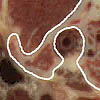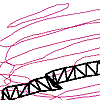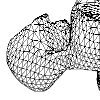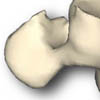
 Figure 1. Trace the outline of the vertebra in the imagery.
Figure 1. Trace the outline of the vertebra in the imagery.
|

 Figure 2. Triangulation between the vertebra's contours on adjacent layers.
Figure 2. Triangulation between the vertebra's contours on adjacent layers.
|

 Figure 3. Create an overall mesh from all the pairs of contours.
Figure 3. Create an overall mesh from all the pairs of contours.
|

 Figure 4. Render the structure using various computer graphics techniques.
Figure 4. Render the structure using various computer graphics techniques.
|
|
The four basic steps for generating a model of the first cervical vertebra.
|



